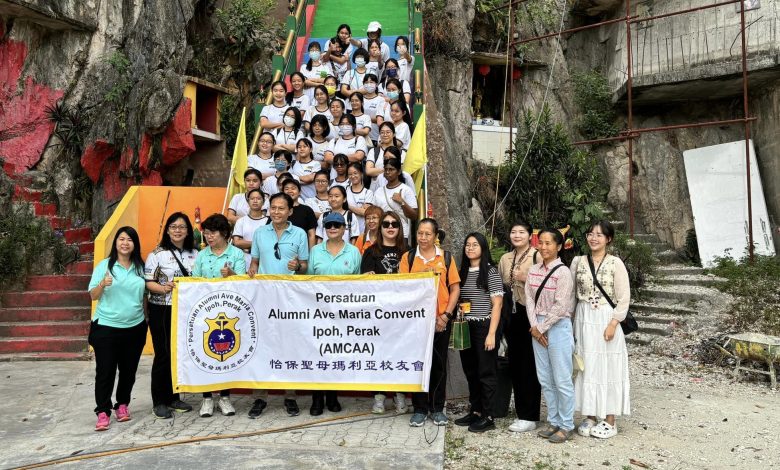

by KT Leong
Malaysia is filled with historical riches, scattered throughout the nation. Learning about some of the many historical sites will help us to better cherish our nation.
With this in mind, on August 3rd, The Ave Maria Convent Alumni Association (AMCAA), guided by the academic and historian, Professor (Dr.) Gary Lit Ying Loong, led 33 junior high school students on a trek to visit some of these historical sites, in both Kampar and Gopeng.
SMJK Ave Maria Convent Ipoh (AMC) is the first school to embark on this special and unprecedented heritage tour.
Their first stop was at the Gopeng Jin Long Yan, to be immersed in natural history, as they observed and learned about the fossil of a tiger on the rock wall of the Four-Faced Buddha Cave.
Discovered by archaeologists in the 1990s, it is estimated to be 320,200 years old and one of, if not the most well-preserved carnivorous mammal skeletons in Southeast Asia.
Then it was off to the famous Gopeng Water Pipe, which was once part of the longest parallel pipes in Malaysia with a total length of about 15 km.
Imagine the size of the structure in its heyday! Nowadays, the wonders of industry are often hidden from us. But the Gopeng Water Pipe is a physical reminder of how integral tin mining was to Malaysia itself. Indeed, the state of Perak is named after the silver sheen of tin itself.
Their third stop was the 140 year old Guanyin Temple, a combination of man-made and natural beauty; where according to records, the Malayan Anti-Japanese Army had hidden on the hill behind the temple.
After that, they visited the Kampar Chinese Crematorium and Cemetery, which was the site of the most ferocious battle during World War 2 in Malaya, i.e. Battle of Kampar. A reminder that Malaysia, then Malaya, was not exempt from the second World War. Some of our grandparents, and even some of our parents, have had to hide away in attics, to avoid hostile forces.
Finally, they visited the Kinta Tin Mining Industry (Sand Pump) Museum, where they had the privilege of looking through the various relics of the tin mining age, from old mining tools to ore samples.
There are many historical sites, virtually in our own backyards, and the public should be encouraged to explore their heritage.


